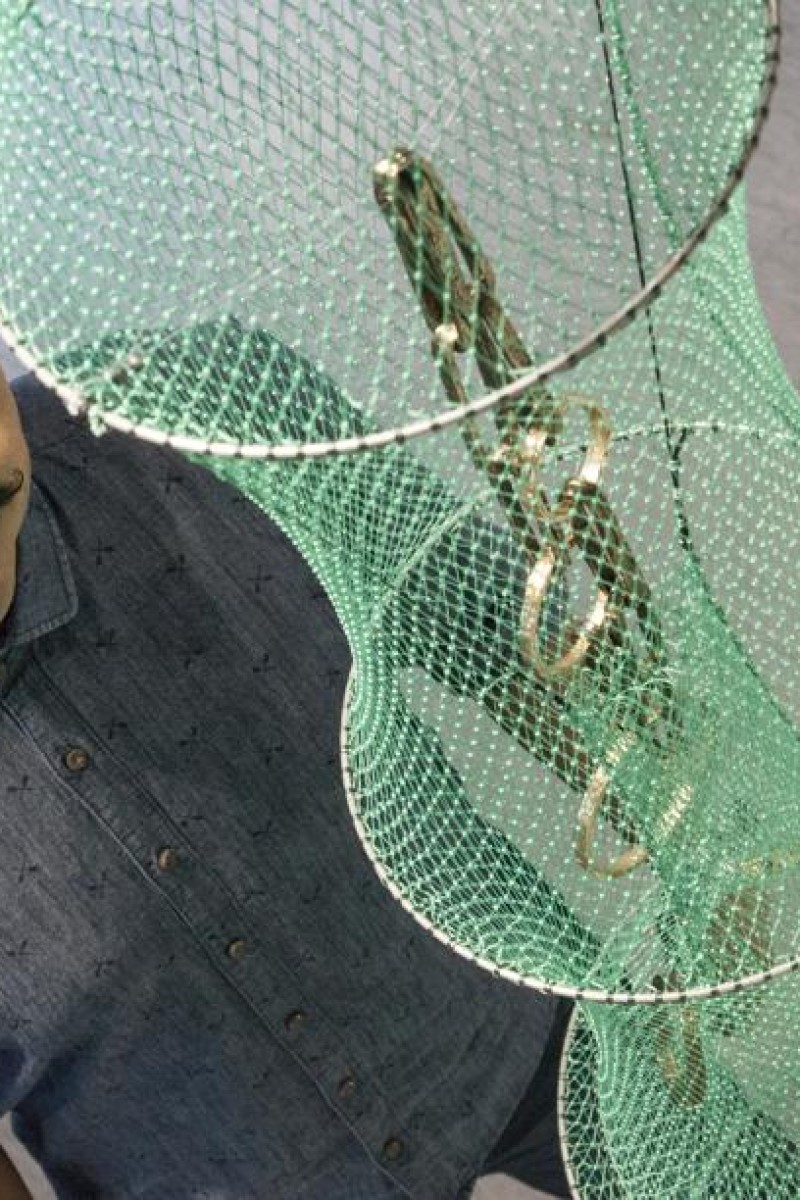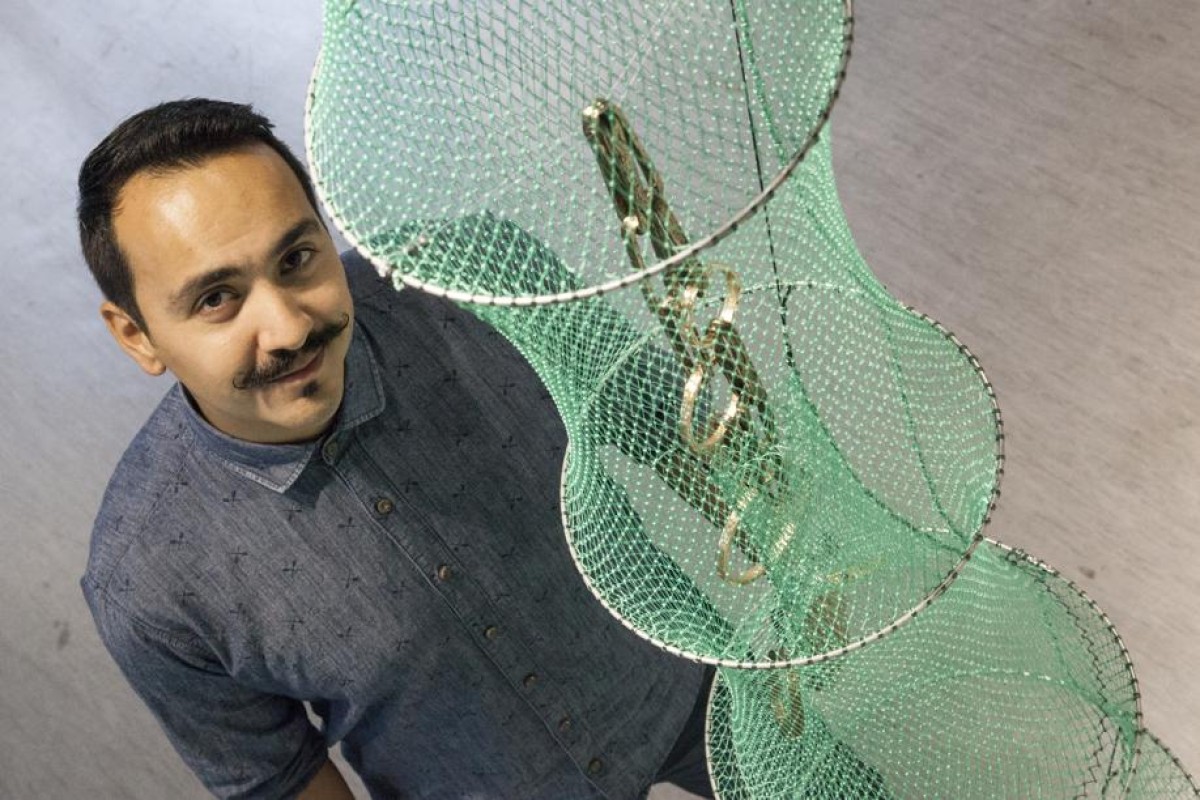
How jewellery can help save our planet - Juan Sebastian Galan Bello's eco-friendly designs prove recycled pieces "Can Be Beautiful"
The 29-year-old Colombian jeweller tell us how we can do our part to reduce waste the next time we shop for accessories
 Jewelry Designer Juan Sebastian Galan Bello with his recycled jewelry creations.
Jewelry Designer Juan Sebastian Galan Bello with his recycled jewelry creations.While most of us would throw away empty tin cans without a second thought, some like to reuse them as containers or flower pots. But how many people do you know who can turn those cans into jewellery?
Colombian Juan Sebastian Galan Bello, 29, is someone who has done just that. He has given new life to old tin cans in his collection titled “Can Be Beautiful”.
The collection’s success has brought his pieces all the way from Geneva, Switzerland, to the Swiss Accessory and Watch Design by Head – Genève exhibition at the Hong Kong Design Institute.
The 2013 Geneva School of Art and Design (Head – Genève) graduate’s masterpieces have been on public display since September 9, alongside more than 100 pieces of impressive work by other students and graduates from Head – Genève, such as watches, eyewear, and leatherwear.
Fascinated by Bello’s creative and sustainable solutions to the future of jewellery design, Young Post sat down for a coffee with the eco-friendly jewellery designer to learn more about his work and green vision.
He was inspired to create “Can Be Beautiful” after his surprising discovery of Geneva’s organised and well-established recycling system. He was also impressed that about half of the country’s products were recyclable.
The young designer then realised that, generally, people back home in Colombia and around the world lacked environmental awareness, and he wanted to do something about that.
Bello observed that millions of tin cans are produced per day, and “we find a lot of them on the street, not recycled”, he said. So he decided to show the world that even waste materials like tin cans can be turned into something valuable.
By recycling an “uncommon” item into products of high value, he hoped to stir discussions on “the idea of value” and to make people think about what they are spending their money on.
Although producing green accessories can be very costly, Bello told Young Post that many young people are still willing to pay for them because they appreciate handmade products and the concept behind them.
“Sustainable jewellery is going to be expensive because of how you transform [the pieces]. It’s not going to be as expensive as gold or diamond, but you have to think about the idea of giving value [to] the traditions and keeping the craftsmanship alive,” he said.
Customers, who learn about the process and purposes behind eco-friendly jewellery design, also tend to spread the story among their friends, he added.
If you plan to buy any gold or silver, Bello reminds Young Post readers that they can still be eco-friendly customers by asking where the material for the jewellery came from. “I think the most important thing [is] to be aware of the whole [life] cycle of the piece,” Bello said.
Next time you or your family or friends buy jewellery, aside from considering its lifespan, also ask “how much energy is used for [its] production and recycling”, and “how you can reduce the environmental impact” by considering the pollution caused by making the piece.
